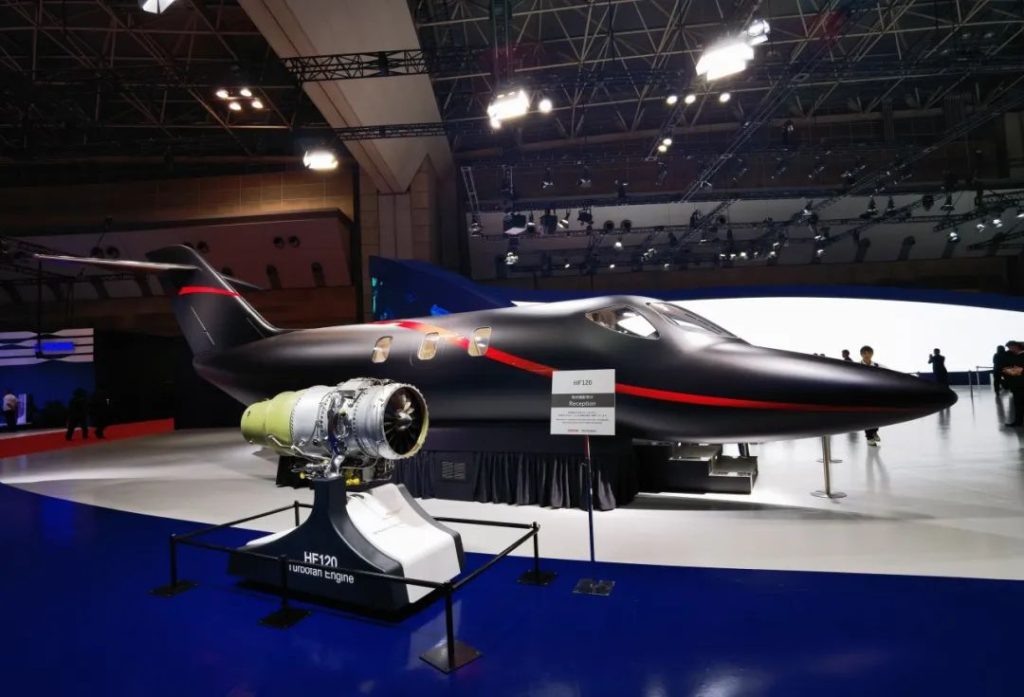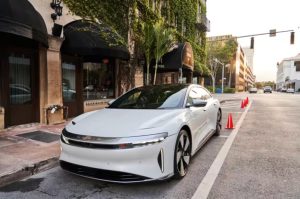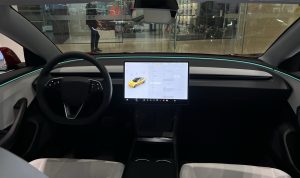Japanese Automakers Stand Strong Amidst the Electric Revolution
7 min read
Tokyo Motor Show Reflects Slow Electric Vehicle Adoption
The Tokyo Motor Show took place recently, and several key themes emerged during the event. These included a lack of new model debuts, a focus on electric vehicle (EV) concepts, an exploration of mobility solutions, and the notable presence of three major foreign automakers: Mercedes-Benz, BMW, and the debut of China’s BYD. These key elements seemed to define the entire exhibition.
This raised questions about the Tokyo Motor Show’s relevance. While it’s true that the show appeared lackluster in terms of traditional automotive product launches, it also reflects the transformative phase the automotive industry is experiencing. As mature markets evolve, they tend to undergo qualitative transformations. Japan seems to be on a path of redefining its automotive identity, and this process is not solely product-oriented. The industry is becoming more interested in the complex relationships between cars, individuals, and society.
Amidst the global push for electrification and smart technologies, Japanese automakers appear to be cautiously embracing change. They showcased a range of all-electric concept vehicles, acknowledging that they cannot resist this transformation entirely. However, unlike the highly competitive Chinese market, where brands aggressively vie for market share through cutting-edge innovations and competitive pricing, Japanese automakers seem more reserved in embracing radical change.
In the domestic market, where Japanese automakers have long enjoyed a strong presence, they hold over 80% market share, despite a total volume of around 4 million vehicles. However, this dominance doesn’t extend beyond their home country. In China, the world’s largest automotive market, Japanese automakers face fierce competition from both local and international electric vehicle manufacturers. China’s robust commitment to electric mobility is evident, with electric cars gaining significant market share.
When we compare Japanese automakers with global leaders like Tesla and emerging forces like BYD, the differences in advantage and momentum become evident. Some have criticized Japanese automakers for lagging in the electric vehicle race, and this sentiment is not unfounded. However, it’s crucial to remember that Japan accounts for only a small fraction of the global market. For instance, Toyota, a major player in Japan, holds less than 20% of the market share in the entire Asian region. If we exclude the relatively strong Southeast Asian markets, Toyota’s share in China is even lower.
In Southeast Asia, Japanese automakers have established strong footholds. Their relationships with local governments, dealers, and involvement in policy formulation make them formidable contenders. Although Chinese brands are making strides in the Southeast Asian market, the deeply entrenched nature of Japanese automakers makes it challenging to overthrow their dominance, let alone compete with Toyota’s strong presence in the United States.
The article suggests that the Japanese approach to innovation and change might be influenced by cultural and societal factors. Japan has traditionally focused on refinement and optimization rather than radical, disruptive innovation. Japanese culture values respect for tradition and a sense of “apology,” which means showing respect for what came before. In contrast, the United States and China have demonstrated a more disruptive approach to innovation.
Additionally, there’s a sense of low desire for rapid technological advancements in Japan’s society. People still use older devices, like iPhone 6S, and traditional ticketing systems in Tokyo’s subways. These factors, combined with the preference for simpler, boxy K-Cars, suggest that Japanese consumers may not have a strong appetite for rapid technological upgrades.
Despite these factors, Japanese automakers remain resilient and dominant in their home market. The article questions whether Japan’s conservative approach to change is a disadvantage or a carefully calculated balance that serves the industry well in the long term.
The Tokyo Motor Show presented an opportunity for foreign automakers to challenge this status quo, with BYD making an impact by showcasing its cost-effective capabilities, which have even raised concerns at Toyota. While Japanese automakers have been slow to embrace full electric vehicles, there’s no denying the impact of BYD’s presence, which is poised to disrupt the Japanese EV landscape.
It’s essential to note that in 2022, Japanese automakers achieved record global sales, totaling 20.51 million vehicles. Toyota, Honda, and Nissan posted strong global profits in 2023. This performance raises questions about the true value and significance of rapid innovation and the rat race in the automotive industry.
The article concludes by mentioning a Japanese automotive media agency’s article that criticized China’s electric vehicle path, raising concerns about issues like shared electric vehicles leading to abandoned “graveyards” and battery degradation risks. This article from Japan highlights the potential resistance within the Japanese automotive industry toward the global electric revolution.
The author argues that this perspective may be influenced by a lack of exposure to recent developments and innovations in the electric vehicle sector, especially in countries like China. It’s clear that Japanese automakers are taking a cautious approach, emphasizing a multi-faceted approach to mobility that includes hybrid vehicles, fuel cell vehicles, and more, as demonstrated by Toyota’s strategy. This measured approach reflects Japan’s unique stance in the global automotive industry and the challenges it faces in adapting to the electric revolution.

For instance, Toyota did not introduce a rapidly deployable and marketable EV product at the auto show. Next-generation urban SUV concept FT-3, rugged off-road SUV concept Land Cruise se, and electric sports car concept FT-Se, while having designs and styles that differ from current trends in the Japanese domestic market, might have potential if they were to be mass-produced and offered in China and globally.
On the other hand, the KAYOIBAKO bB+ concept car and the next-generation pickup concept showcased a reinvented driving experience with the support of electric power. They featured enhanced interior expandability, offering versatile and customizable spaces for a limitless range of mobility possibilities. The inclusion of more information displays and interactive screens gave off a flavor reminiscent of China’s new EV players, which might represent Toyota’s most extreme “innovation” to date.
Nissan’s electrification approach appeared cool and trendy, with innovative “Hyper” EV concept cars like the super-punk, super-traveler, and super-adventurer series. These concepts featured fashionable designs and self-expression, even incorporating elements of gaming to attract the attention of young consumers. However, Nissan’s previous pure electric vehicle, Airiya, failed to gain significant traction, indicating that the brand has faced challenges in its electric vehicle journey.

In addition to the mentioned aspects, Honda’s business aircraft and mobile travel tools are more noteworthy than their automobiles. Honda’s collaboration with General Motors on the Prologue product, based on the Ultium platform, has already been introduced to the North American market, but details about their plans in China remain unclear. The SUSTAINA concept car, like Mazda’s ICONIC SP Concept, focuses on the application of sustainable and recyclable materials in car production, aligning with the resource-conscious Japanese market.
Autonomous driving was also present at the show. The Honda CI-MEV concept and the AFEELA concept, developed in partnership with Sony, are two of the more advanced autonomous driving demonstration vehicles. The former is an adaptation of a microelectric vehicle with high-level autonomous driving capabilities, addressing the challenge of cost when implementing advanced autonomous features in lower-end products. As for Honda’s autonomous driving minibus, it leans more toward the customized market.
AFEELA can be considered one of the products that align best with the global trend of intelligent electric vehicles, especially with features like laser radar, vision fusion algorithms, and an intelligent cockpit that connects seamlessly with smartphones and offers a multi-screen experience. It’s no wonder that Sony’s former CEO for the Honda-Sony electric vehicle joint venture, Izumi Kawanishi, once said, “New energy vehicles in China have no technological surprises; they can only arrange icons like smartphones.”

This paragraph discusses how Japanese automakers like Daihatsu and Suzuki have introduced EV products that can be categorized as conversions of gasoline vehicles to electric power, commonly referred to as “oil to electric” in the Chinese market. These vehicles typically take an older boxy car body, add a large battery underneath, and replace the powertrain with an electric motor. However, these conversions lack new design elements and don’t offer a truly conceptual approach; they emphasize retro styling. While Japanese automakers acknowledge the benefits of electrification, they are somewhat slow to embrace it fully due to their limitations in terms of EV demand, the supply chain, and service infrastructure.
One example of this delay is the scarcity of mainstream 6 kW chargers and the limited number of charging infrastructure in Japan. Customers often have to queue up at dealerships for recharging, which hinders the rapid adoption of EVs in the country.
Another significant statistic highlighted in the text is that in 2022, Japan’s electric car sales reached approximately 59,000 units, marking a historic high and nearly tripling the previous year’s total. These sales accounted for 1.7% of Japan’s passenger car market, surpassing 1% for the first time. In contrast, the market share of electric cars in China is over 30%. This data highlights the disparity in electric vehicle adoption between Japan and China.


